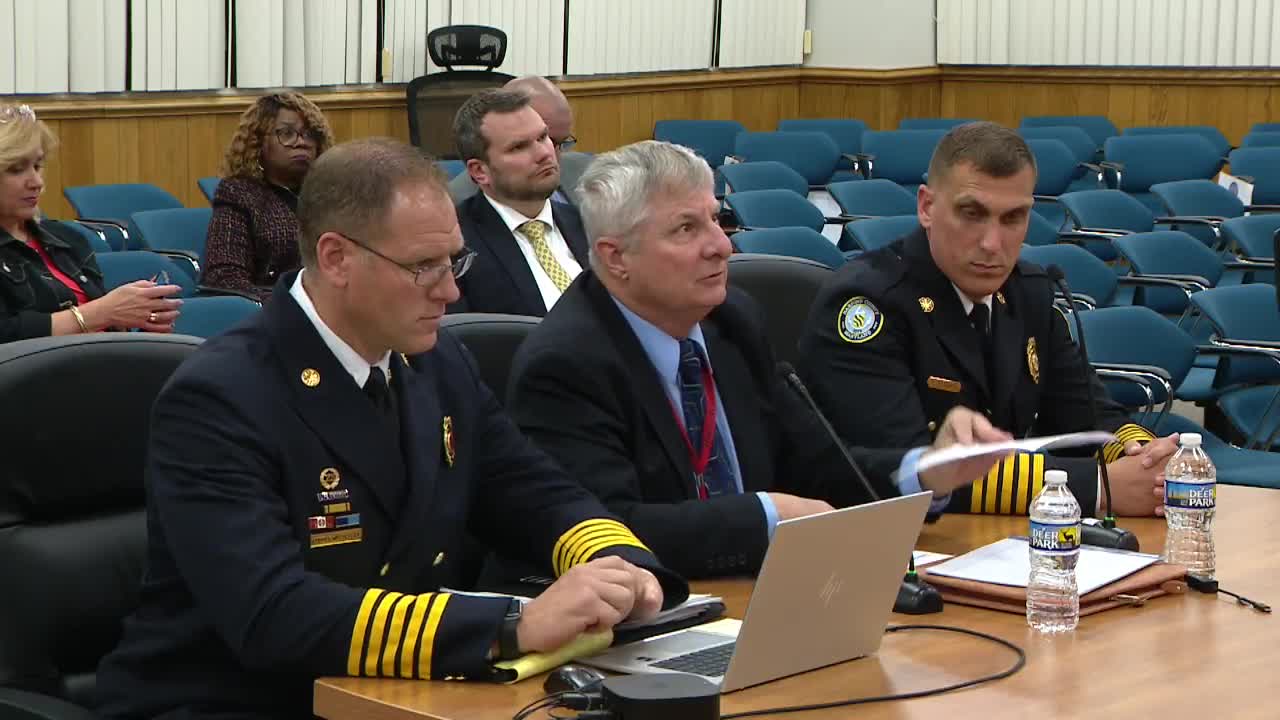Fire Companies Face Recruitment Crisis Amid Rising Call Volumes
October 15, 2024 | Harford County, Maryland
This article was created by AI summarizing key points discussed. AI makes mistakes, so for full details and context, please refer to the video of the full meeting. Please report any errors so we can fix them. Report an error »

In a recent meeting, the Harford County Fire Association discussed pressing challenges and initiatives aimed at improving fire and emergency medical services across the region. With 12 fire companies and over 1,500 members, the association is grappling with recruitment and retention issues, exacerbated by a significant decline in volunteer participation nationwide.
The association reported a staggering 10,965 fire alerts in the past year, with Bel Air leading the charge at an average of 7.1 calls per day, while other companies like Norrisville faced long stretches without any calls. This disparity in call volume presents unique challenges in maintaining member engagement, particularly for younger volunteers who seek active participation.
The meeting highlighted the ongoing collaboration between volunteer fire companies and the paid Emergency Medical Services (EMS) provided by the Department of Emergency Services (DES). Despite a drop in volunteer participation since the county took over EMS two years ago, the partnership has been described as effective, with DES responsive to concerns raised by the fire companies.
A significant concern raised was the high volume of nuisance calls, such as false alarms, which account for over 45% of alerts. The association is advocating for increased fines for repeated false alarms to mitigate this issue, which drains resources and can hinder response times for genuine emergencies.
Recruitment efforts are a primary focus, with the association exploring innovative marketing strategies and potential legislative changes to enhance incentives for volunteers. The current incentive program, which has seen increased participation, is facing funding shortfalls, prompting requests for additional budget allocations to ensure its continuation.
The association is also addressing the need for improved training flexibility for new recruits, recognizing that traditional class schedules may not align with the busy lives of potential volunteers. Discussions are underway to partner with DES to offer more adaptable training options.
In terms of infrastructure, the association is pushing for the establishment of a paid fire station in the Churchill area, a recommendation from a 2009 fire study that remains unaddressed. This station is deemed crucial for improving response times in a high-traffic region.
Additionally, the meeting touched on the challenges posed by electric vehicles and their associated fire risks, highlighting the need for specialized training and equipment to handle such incidents effectively.
Overall, the Harford County Fire Association is committed to enhancing its services through strategic recruitment, improved training, and infrastructure development, while navigating the complexities of modern emergency response demands.
The association reported a staggering 10,965 fire alerts in the past year, with Bel Air leading the charge at an average of 7.1 calls per day, while other companies like Norrisville faced long stretches without any calls. This disparity in call volume presents unique challenges in maintaining member engagement, particularly for younger volunteers who seek active participation.
The meeting highlighted the ongoing collaboration between volunteer fire companies and the paid Emergency Medical Services (EMS) provided by the Department of Emergency Services (DES). Despite a drop in volunteer participation since the county took over EMS two years ago, the partnership has been described as effective, with DES responsive to concerns raised by the fire companies.
A significant concern raised was the high volume of nuisance calls, such as false alarms, which account for over 45% of alerts. The association is advocating for increased fines for repeated false alarms to mitigate this issue, which drains resources and can hinder response times for genuine emergencies.
Recruitment efforts are a primary focus, with the association exploring innovative marketing strategies and potential legislative changes to enhance incentives for volunteers. The current incentive program, which has seen increased participation, is facing funding shortfalls, prompting requests for additional budget allocations to ensure its continuation.
The association is also addressing the need for improved training flexibility for new recruits, recognizing that traditional class schedules may not align with the busy lives of potential volunteers. Discussions are underway to partner with DES to offer more adaptable training options.
In terms of infrastructure, the association is pushing for the establishment of a paid fire station in the Churchill area, a recommendation from a 2009 fire study that remains unaddressed. This station is deemed crucial for improving response times in a high-traffic region.
Additionally, the meeting touched on the challenges posed by electric vehicles and their associated fire risks, highlighting the need for specialized training and equipment to handle such incidents effectively.
Overall, the Harford County Fire Association is committed to enhancing its services through strategic recruitment, improved training, and infrastructure development, while navigating the complexities of modern emergency response demands.
View full meeting
This article is based on a recent meeting—watch the full video and explore the complete transcript for deeper insights into the discussion.
View full meeting
